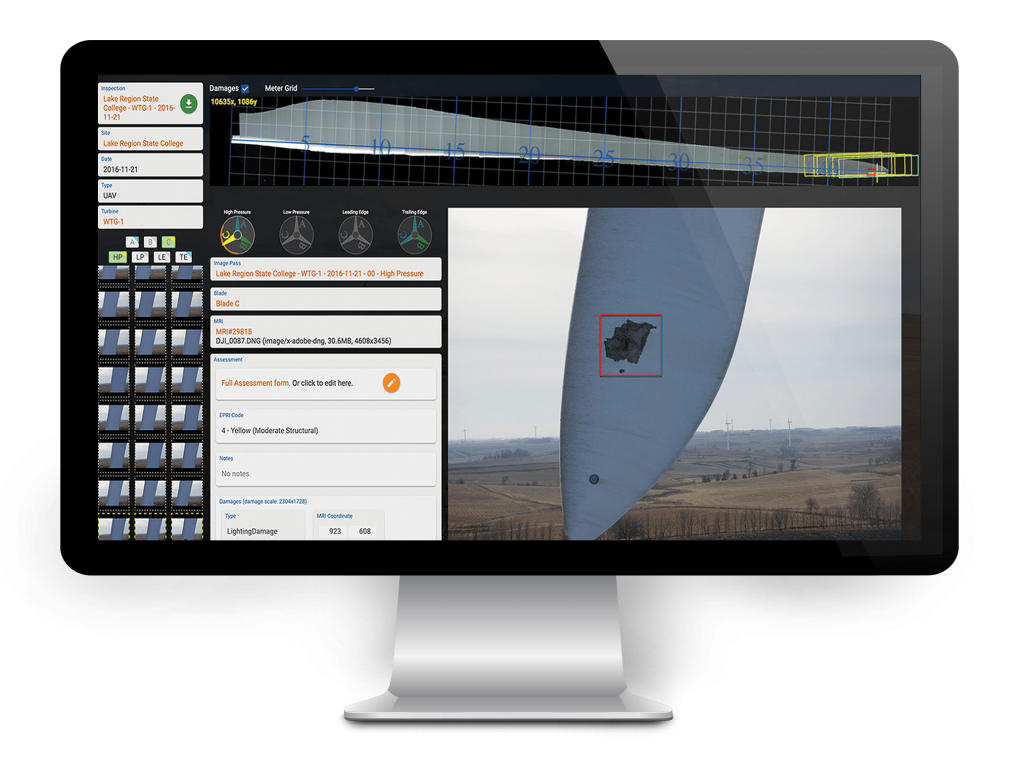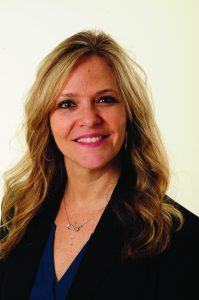What are your duties with BladeEdge?
I joined the BladeEdgeSM team in early 2018 as a Business Development Manager. I have a background in technology and sales, and with BladeEdge being a technology company, it was a perfect fit. My primary role is to showcase the incredible value of the BladeEdge suite of software tools for the wind industry. My role is to help original equipment manufacturers (OEMs), energy companies, wind-farm owners and operators (O/Os), and operation and maintenance teams use technology to maximize annual energy production (AEP). We want to help them operate their farms more effectively and efficiently, using big data to ground important operation decisions.
I’m often traveling, meeting with industry leaders, and demonstrating how BladeEdge analytics transform their business through the Capture • Compute • ConsumeSM methodology. More specifically, our process begins with expertly piloted unmanned aerial vehicle (UAV) inspections assisted by our BladeEdge Capture Assurance ToolSM (BECATSM). Next, data captured in the field is processed automatically via our deep-learning algorithms. Finally, we use what we learn from the data and analytics to inform maintenance, repair, and management decisions.
What challenges do you plan to tackle in your role as business development manager?
In the grand scheme of things, major technology advancements in the wind industry are still very new. The demand for commercial wind energy continues to increase, and the technology applications deployed are changing and improving so fast that it can be hard to keep up. Having a technology partner like BladeEdge gives companies a leg up.
As O/Os increase production capacity, they’re faced with bigger challenges in keeping track of every blade on every turbine. Regular inspections are key, and inspections via ground scope or climber aren’t producing effective results. That’s where drone technology makes a big difference. But with drone-assisted inspections comes a mountain of data and high-resolution images.
More data means a clearer picture of your infrastructure, but it also means more work to analyze manually. Artificial intelligence (AI) cuts analysis time down from days to minutes. This saves valuable time and also simplifies maintenance decisions. The BladeEdge software is backed by an extensive image library, and the AI is always learning what irregularities to search for during analysis. When damage is pinpointed early, it can be addressed and repaired before it becomes a larger problem with the potential to slow production.
My challenge is keeping industry leaders educated on the newest technology and showing them that this technology is approachable, easy to use, and essential to improving their processes and their bottom line.
What about the wind industry has impressed you?
The wind industry thrives on innovation. Every year, we see tremendous growth. Consumers continue to demand more and more wind energy, and the industry has evolved to streamline operations, improve efficiencies, and increase production. The wind industry is on track to produce 10 percent of the nation’s energy in the next few years, which is so exciting.
I’m also continually impressed by the people who have made careers in the wind industry. Everyone is passionate about clean energy. They love the industry, the technology, and the positive impact the industry has on the world. Most of all, they’re not afraid to evolve the industry for the future.
What has surprised you?
I’m relatively new to the industry, and the sheer size of the industry surprised me. When large corporations commit to wind-energy production, the impact is huge. The general public wants green energy, and so many are adopting wind energy to meet this demand. That means there’s tremendous potential for growth.
I’m incredibly proud to be a part of this industry. We’re always looking toward the future and doing what we can today to create a cleaner and greener tomorrow.
What experience from your previous positions has helped you with wind?
My previous sales experience has been invaluable as I work to build strong relationships in the industry. The wind industry is a tight group because we’re all pioneering this industry together. As the new gal in a growing industry, I’m constantly learning and always working to strengthen relationships with my clients, so I can help them achieve their goals.
I also understand the importance of data and analytics from my previous work in the technology sector. AI has the power to transform the wind industry for the better – we’re already taking steps toward driving the industry through technology. Automation improves efficiencies across the board, and it can help us maximize AEP and meet the growing demand for wind energy. More data means we can make better-informed decisions on proactive maintenance – which in turn means we can maximize the useful life of every blade.

How important is data analytics for the current state of wind as well as for its future?
Data is essential to detecting damage and wear on blades. When damage is found early, it can be addressed quickly – before it causes a significant decrease in production. Even a small amount of leading edge erosion can cause 5 to 15 percent AEP loss. Big data analytics helps O/Os to make proactive maintenance decisions that decrease turbine downtime and cut maintenance and repair costs dramatically.
Efficiency is key to increased production, and data informs the decisions that make turbines more efficient. Data is an essential tool for the wind industry – and with BladeEdge as a technology partner, making sense of that data is easier than ever before.
What makes BladeEdge stand out among other data analytics companies? In general, as well as for the wind industry?
BladeEdge sees the bigger picture. It’s not just about the inspections. It’s not just about the data. It’s about adopting an entire process to ensure efficiencies across the board. That’s our Capture • Compute • ConsumeSM methodology.
We start by making the most out of every inspection. Our BECAT software is easy to use in the field. We’ve created a dashboard view that allows inspectors to confirm they have captured accurate data on each side of every blade before they leave the field. It also packages the files for further analysis. The software categorizes and labels each high-resolution image automatically. The individual images are stitched together, creating a full mosaic image of the blade to ensure there are no gaps in the data.
BladeEdge software analytics uses AI to process the high-resolution images in mere minutes. Before you can finish your first cup of coffee, you’ll have a deep understanding of where your blades are showing wear and the severity of the damage.
What makes BladeEdge stand out is our ability to transform raw data into actionable intelligence. We offer more than a simple file of images. We provide valuable information that tracks changes over time and influences maintenance decisions.
Where do you see the wind industry in the next 10 years and BladeEdge’s place in it?
I see the industry continuing to grow. Consumers will want to see more and more green energy production, and industry-leading energy providers will continue to adopt wind energy into their production mix.
Technology will continue to grow at an exponential rate, making it an essential tool for wind energy production and asset management. Data and analytics will become even more critical to efficiently and effectively maximize energy output. As wind-turbine quantities increase and assets age, the importance of asset management to achieve maximum performance will be critical.
Lastly, BladeEdge will be there through it all. We will continue to grow alongside the industry, leading with technological innovations to strengthen the industry and improve wind energy production overall.
More info bladeedge.net































